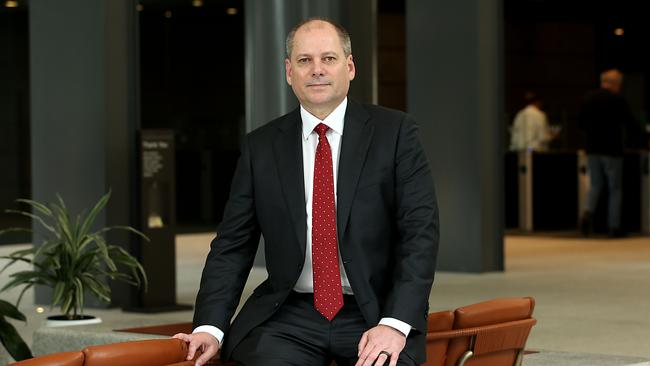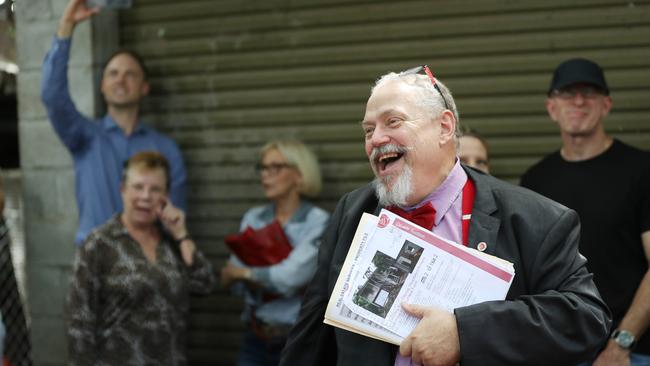Housing supply the big property problem: Westpac
Westpac’s CEO says a lack of housing supply is helping push prices to unaffordable levels for first-time buyers.

Westpac chief Peter King has highlighted lack of housing supply as a major problem for the nation and climbing property prices, saying affordability for those looking to break into the market is a “big issue” for policymakers.
Mr King said a strong bounce back in house price growth was one outcome as the federal government and central bank sought to stimulate borrowing and economic activity to help the recovery from the COVID-19 recession.
But he noted that supply issues in the market were exacerbating house price growth, and the issue needed to be addressed over the medium term.
“In relation to what’s driving housing prices, it’s from my perspective supply and demand so one of the ratios we look at quite a lot is new listings to sales and it’s still out of whack (more sales than new listings),” he told a banking conference in Sydney.
“I don’t think bank debt is a driver of the housing prices, I think it’s a fundamental supply demand issue.”
Preliminary CoreLogic data for March shows a 2.8 per cent jump in house prices nationally, the strongest result since 1988, with the first quarter’s growth tracking at 5 per cent.
“If you extrapolate that out (for the year), it gets into nose bleed territory,” CoreLogic international chief Lisa Claes told the same conference. She noted, though, that house price growth in Australia was still lagging markets including New Zealand and the United States over the year.
The strength in demand for housing was echoed by Mortgage Choice CEO Susan Mitchell who cited a rush of first home buyers and demand being stoked by record low interest rates and competitive offers.
“Everything has blossomed... it’s just been an incredible period of time,” she said.
Australian Prudential Regulation Authority chairman Wayne Byres said the regulator was closely monitoring risk-taking in the banking industry, although there were no signs of stark near-term issues in lending standards.
“There does not seem cause for immediate alarm. Nor, though, for complacency,” he said.
“We are obviously watching risk-taking by the banking sector closely, along with our colleagues on the Council of Financial Regulators.”
APRA is monitoring factors including how housing credit is growing relative to income growth, and the level of deposits being provided on average across the mortgage market, which reflects the risk profile of home loans.
Mr Byres said APRA had a number of regulatory tools at its disposal to curb higher-risk bank and non bank lending, if the situation warranted.
“There is a discussion, particularly at the Council of Financial Regulators, about what’s the problem we are actually trying to solve? Again, high and rising house prices are not a problem in and of themselves, it’s a question of how they play out. Is leverage becoming excessive? Are lending standards becoming weak?”

Mr King said lack of supply and rising house prices were impacting affordability, and needed to be addressed by policymakers.
“I think that’s a big issue if you are someone in a family that has wealth, broadly lower interest rates have been good. If you are trying to get into the market it’s harder, so that’s one of the policy areas that we will need to think about and it’s not just banks it’s all parts of the economy and government... but it is an outcome of what we’ve done to get through the crisis.”
He called for a closer assessment to boost housing supply, over tinkering with measures such as regulatory lending caps, capital gains tax or negative gearing.
“I’d lean to more supply, actually... let’s look at how we can create supply,” Mr King added.
He was referring to building more homes, particularly in regional Australia, and looking at ways to make it quicker to commute to cities or boost remote working.
“There are different ways we can solve it. Regional Australia and where we have the workforce, will play a part of it. That’s a more medium-term solution,” Mr King said.
“Trying to control prices through taxes and what not, sometimes works but not always.”
SQM Research principal Louis Christopher cautioned that while demand and prices were hot in regional Australia currently, some of those markets had historically been “highly volatile” given there was not a lot of liquidity when people opted to sell.
“You do not want to be on the wrong side of a downturn , and a downturn in these regional areas will come eventually,” he said.
On Monday, Mr King said a strong labour market and better than expected economic growth would likely shield the economy from any disruption caused by the March 28 end of JobKeeper.
Mr Byres said while Australia had navigated the pandemic well, future shocks to the economy and financial system would emerge.
“We just don’t know when or where the next one will come from: geopolitics, trade tensions, natural catastrophes, health crises, cyber-attacks, fraud or recklessness,” he added.
“From whatever direction it emerges, however, it’s essential for the community’s ongoing prosperity that Australia’s banks, insurers and superannuation funds have the skills, experience and financial wherewithal to respond effectively.”
But banks are pencilling in a further rebound in the business sector in 2021, as COVID-19 risks recede, despite the snap Brisbane lockdown.
In the small business market, National Australia Bank’s head of business Andrew Irvine outlined his expectations that rising confidence would boost lending in coming months.
“Our pipelines are the largest they’ve been in a long time,” he said.
Bank of Queensland business boss Fiamma Morton said she was also upbeat on 2021, even though there were pockets of weakness and 10 per cent of businesses claimed they only had cash flow to last one month.








To join the conversation, please log in. Don't have an account? Register
Join the conversation, you are commenting as Logout